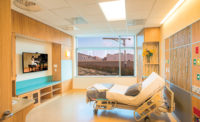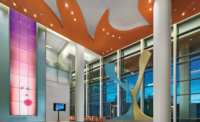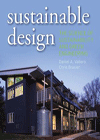Team members used the MBDC-developed "Cradle to Cradle" sustainability protocol. One of its components certifies materials that can be circulated and reused, rather than disposed of. Krehlik says chemists were brought in to find ways to remove the toxins, allergens and carcinogens. "We looked at 130 different interior finishes, for example, and ran each one through filters, scored the results and picked the top scorers," he says.
Krehlik says epoxies were the most difficult products to rate because the chemistry is not yet available to reduce their toxicity. He adds that the team found it hard to select acceptable materials because many manufacturers were reluctant to disclose detailed lists of their materials' ingredients and, in some cases, because greener alternatives were not yet available.
The complex also will use less energy than the average U.S. hospital. Photovoltaic panels installed on the roof and garage will trim carbon dioxide output by an estimated 390 tons per year. In addition, 1 million gallons of cooling-tower water for irrigating rooftop gardens will be collected, treated and reused, offsetting 25% of the facility's water needs for landscaping. Efficient fixtures and appliances will cut water use by 40%.
DPR has been active in recycling. In April, it hauled away some 186 tons of wood, metal, sheetrock and other material. More than 176 tons of material were recycled, says Aaron White, DPR project engineer. He says the share of material recycled in April was 94.7%; the average for the prior six months was 92.62%.
According to UCSF, seven hospitals worldwide are rated LEED Silver, five are rated Gold and one Platinum. The university's new center is one of six California health care complexes under development that plan to seek LEED ratings. If UCSF's project hits its sustainability target, it will be one of the largest LEED-certified hospital complexes in the world.










Post a comment to this article
Report Abusive Comment